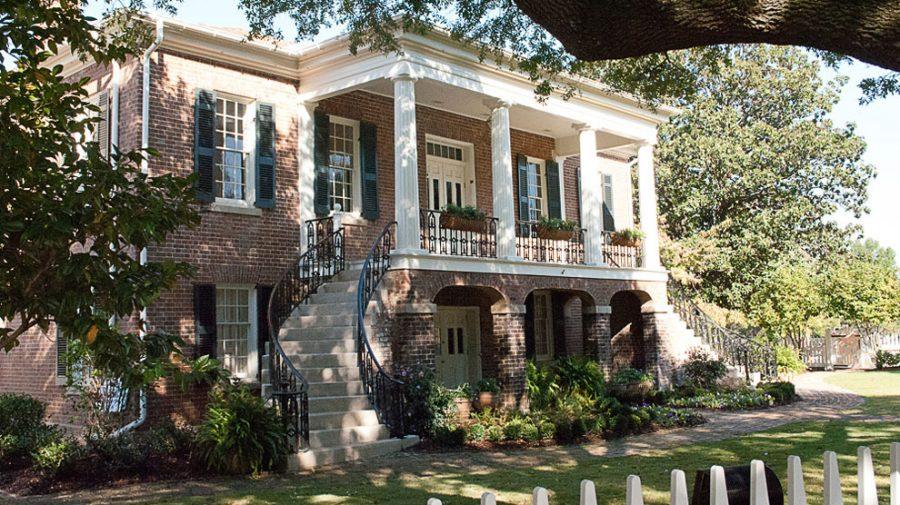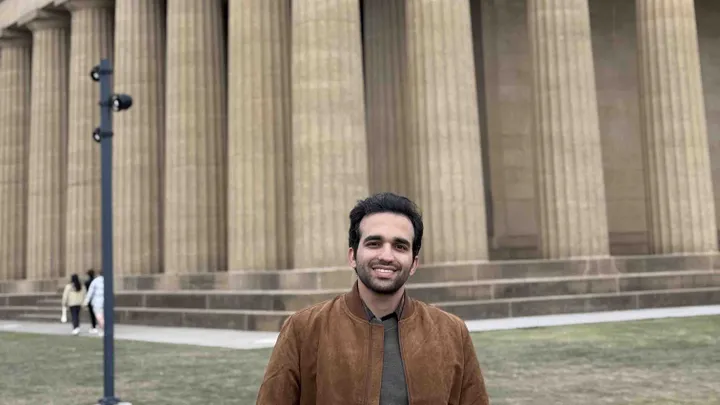Students walk by the pretty brick house every day on their way to class. Some probably know its name, even more are aware of the recent renovations that blocked off several sidewalks for months.
But Erin Harney, director of the Gorgas House Museum, said few students realize that they can walk through the front gates and tour the house at anytime.
“I went to speak to a class recently and there were all these rumors that only greeks can go in the house, that it isn’t opened to the public,” Harney said.
Harney said despite being so centrally located on campus, it is in the back of students’ minds. She hopes to change that.
“The Gorgas family was so involved with their students,” Harney said. “We want the house to be part of the student community now, too.”
Harney hopes recent renovations and future plans for the house will encourage students, community members, and campus visitors to take a step back in time and experience the history contained within its walls.
PAST
—–
“You have just stepped into the oldest building on the University of Alabama campus,” said Harney as visitors walked under the shade of the overhanging porch and into the house’s entryway.
Built in 1829, the house is technically older than the University itself. Designed by William Nichols, state architect at the time, it was originally used as a dining hall for students.
The original UA students were rough-and-tumble frontier boys who didn’t play nice with the East Coast academics hired to teach them, Harney said.
“The early students had a lot of discipline problems,” she said. “In the dining hall, there were frequent food fights. They finally shut it down and renovated it in the 1840s for faculty residence.”
Several decades later on April 4, 1865, Union troops marched through Tuscaloosa and burned down the majority of campus. The house, the President’s Mansion, Little Round House and the Old Observatory, were all that was left standing.
Because of the destruction of the campus and the on-going Civil War, the University shut its doors until 1871. In 1878, UA trustees hired Josiah Gorgas, a Northern-born Confederate general, as president.
Josiah and his wife, Amelia, moved into the house along with two of their six children. Shortly after beginning his work at the University, Josiah suffered a stroke and had to resign. The University installed him as the campus librarian and gave the house to the Gorgas family as a gift.
Thus, the Gorgas House was born.
The Gorgas family became an integral part of the University of Alabama, Harney said.
As her husband worked in the campus library, Amelia Gorgas took on the positions of campus postmistress and nurse matron.
A mail slot was installed in the backdoor of the house and pony-riding mail carriers would drop all University mail at the home, leaving Amelia to distribute it.
Her medicine chest sits perched on a dresser in an upstairs bedroom today, a reminder of the numerous students she no doubt welcomed into her home to care for. Harney said sometimes as many as six students would live in the house under the care of the Gorgas family.
A daughter of an Alabama governor, Amelia was raised among the best and the brightest. Harney said she was a proper Southern lady, whose pedigree offered life experiences that many women of the time did not have.
“Growing up with a governor for a father, she learned how to entertain and have the required social graces. She also travelled extensively with her father,” Harney said. “Amelia was one of two women on the platform when they laid the cornerstone of the Washington Monument.”
However, her privileged upbringing didn’t stop Amelia from working hard to make the University a home for all students.
“She was humble enough to sit in the library and given motherly advice to all the students like they were her sons,” Harney said.
Students commemorated Amelia’s devotion to UA’s students in the dedication of the 1896 edition of the Corolla.
“The Corolla of 1896 is dedicated to Mrs. Amelia G. Gorgas, whose tender ministrations to the sick, motherly counsel to the wayward and erring, and words of encouragement and incentive to all, have made her the good angel of their college home,” stated the dedication.
The Gorgas House was not just a home for students; it was also a gathering place for UA faculty.
Robert Hardaway, engineering professor and namesake of Hardaway Home, spent a period of time boarding with the family. The front porch was designed and constructed by Hardaway as a gift to the family, Harney said.
“I hear all of these names of halls on campus and think, these people were contemporaries,” Harney said. “That’s the special thing about this place – they were probably all in this house.”
In 1883, Josiah Gorgas died. Amelia remained in the house with their unmarried daughters, Mary Gayle and Maria Bayne. She took over her husband’s librarian position.
According to the Alabama Women’s Hall of Fame website, Amelia increased the University’s library of 6,000 volumes to over 20,000 before her death in 1913.
Upon Maria’s death in 1953, the University and Alabama state legislature worked to preserve the house as a memorial to the family and have preserved it as a museum.
PRESENT
Under the new leadership of Harney and the University of Alabama’s efforts to maintain the historic property, grounds renovations at the house have been recently completed.
“The new picket fence is meant to mimic the original style that would have been used during the Gorgas’s time,” Harney said. “In addition, the landscape architect actually went through newspapers from the 1800s to find plants that Alabama had at the time.”
The interior of the house was stripped down in 2005, Harney said, and restored to an authentic Victorian era décor. The original bedroom sets and furniture remain more than a century later.
Josiah’s original prints and paintings he created during his time abroad hang in the downstairs sitting room above a desk from the Alabama’s first Senate, one of four remaining in Tuscaloosa.
In the master bedroom, Amelia’s prayer kneeler stands at the foot of the bed, where visitors can still see the indentations worn into the cushion by hours spent in prayer.
Next to the bed stands an antique wooden cradle, the family crib that the practical Gorgas matriarch sold after all six children outgrew it.
“The University actually tracked down and purchased the original cradle that was used for all the Gorgas children,” Harney said.
Unlike many museums and historic homes, the Gorgas House does not have the typical velvet ropes sequestering visitors to designated corners.
The ropes were removed, Harney said, so visitors could move freely throughout the rooms and get a more authentic sense of the lives that were lived in the home.
Future
Harney, calling Gorgas House the “best representation of a historical home” that she has seen, spends her days giving tours of the house and planning events.
However, since her hiring last spring, she has begun plans to create a more diverse visitor experience.
“One of my goals is to start an archive that will stay at the house,” she said. “I want to show changes of the house over time.”
In addition, Harney wants to create interchangeable exhibits for the house.
“I’m also hoping to do some exhibits in high schools,” she said. “I want to bring the Gorgas House into the community.”
A donor has been found to fund the renovation of the original 1864 piano located in the upstairs sitting room. The piano is to be restored to full playing condition and Harney hopes the House will be able to host a recital when it is returned to the house.
Through these improvements and future exhibits, Harney wants to encourage visitors to return and experience first hand the heritage of the University’s campus found in the house.
“I don’t want people to come see it once and think they shouldn’t come back because they can’t learn anymore,” she said. “There’s a wealth of artifacts here but the house itself is incredible. It’s been here for the entire history of the University.”









